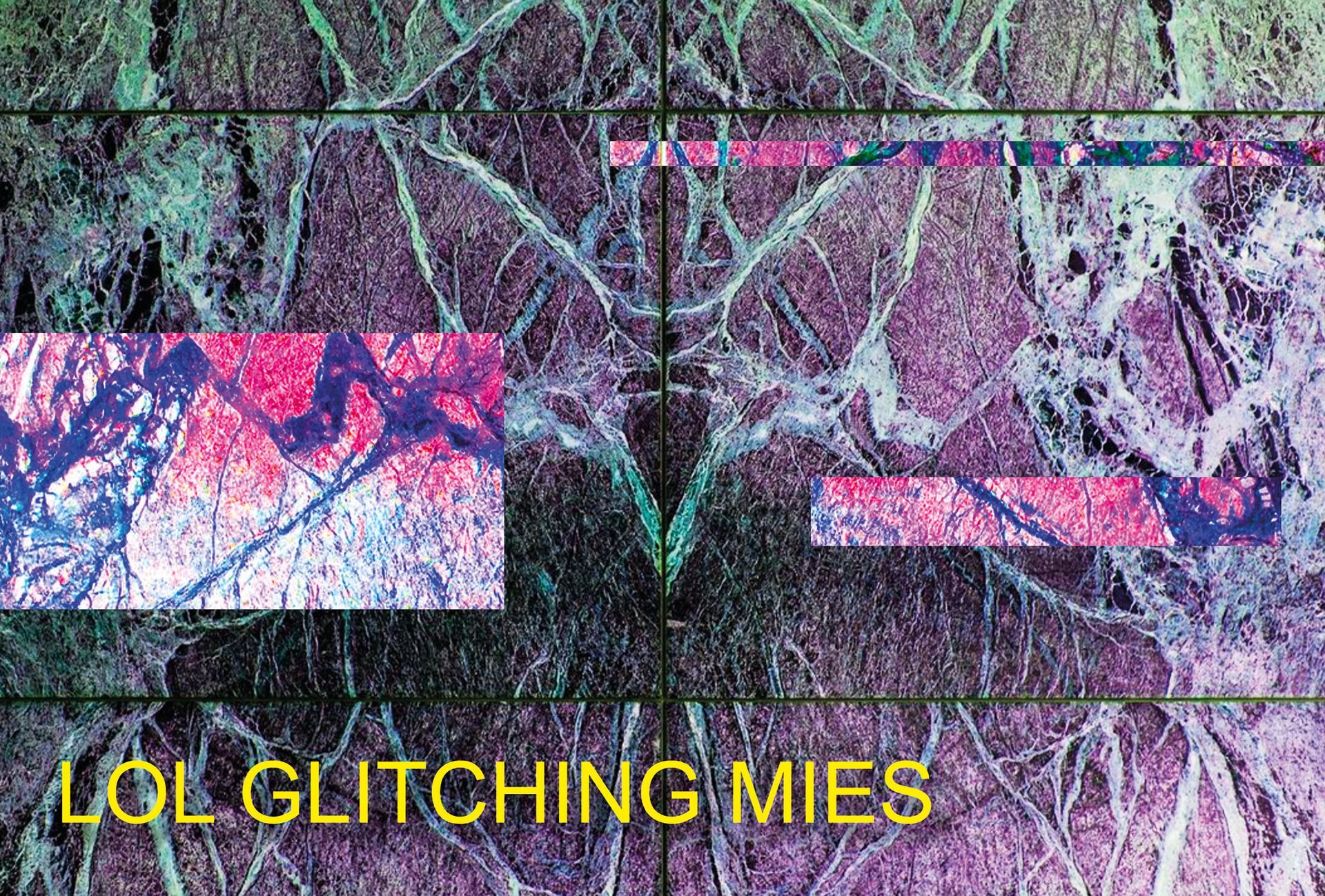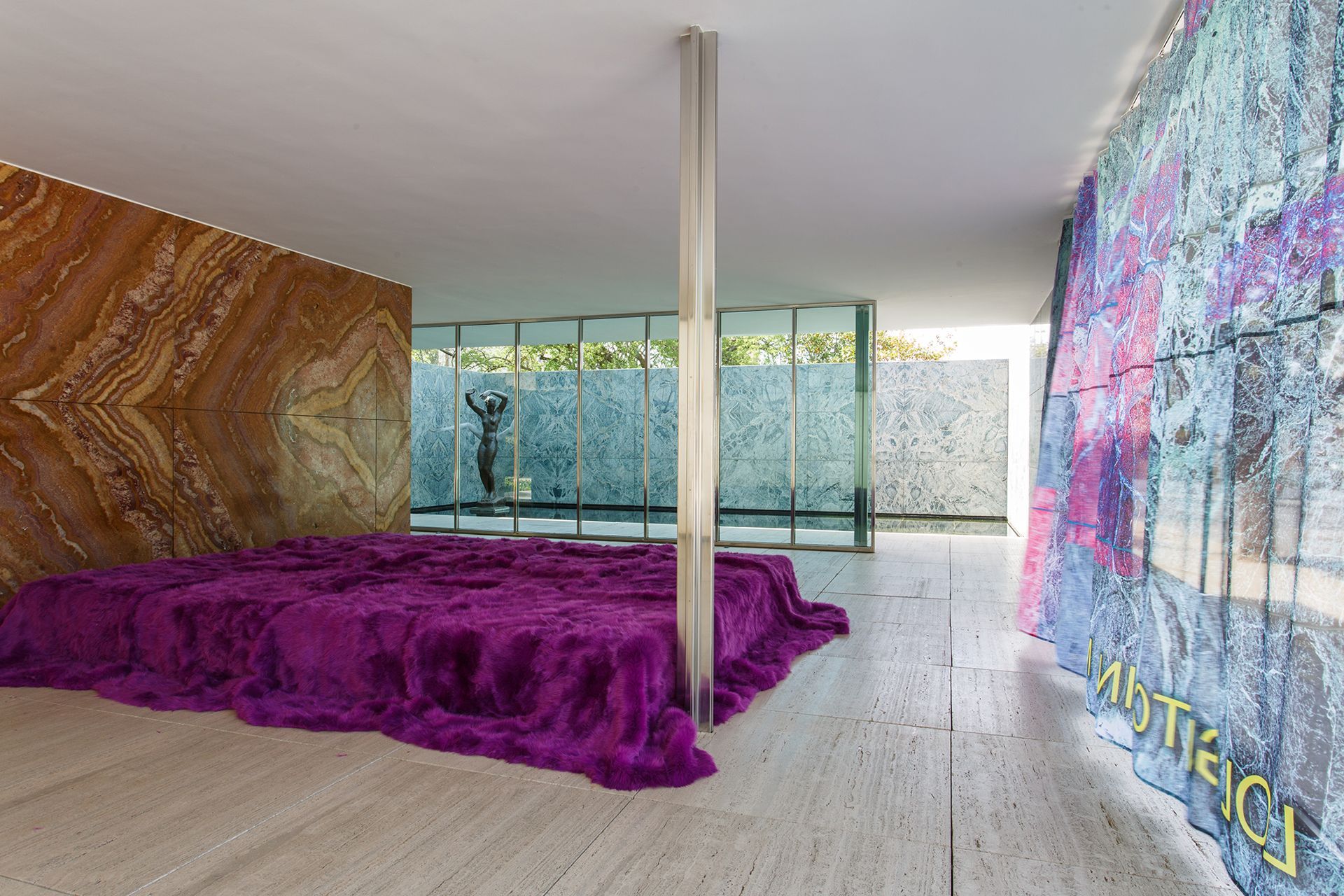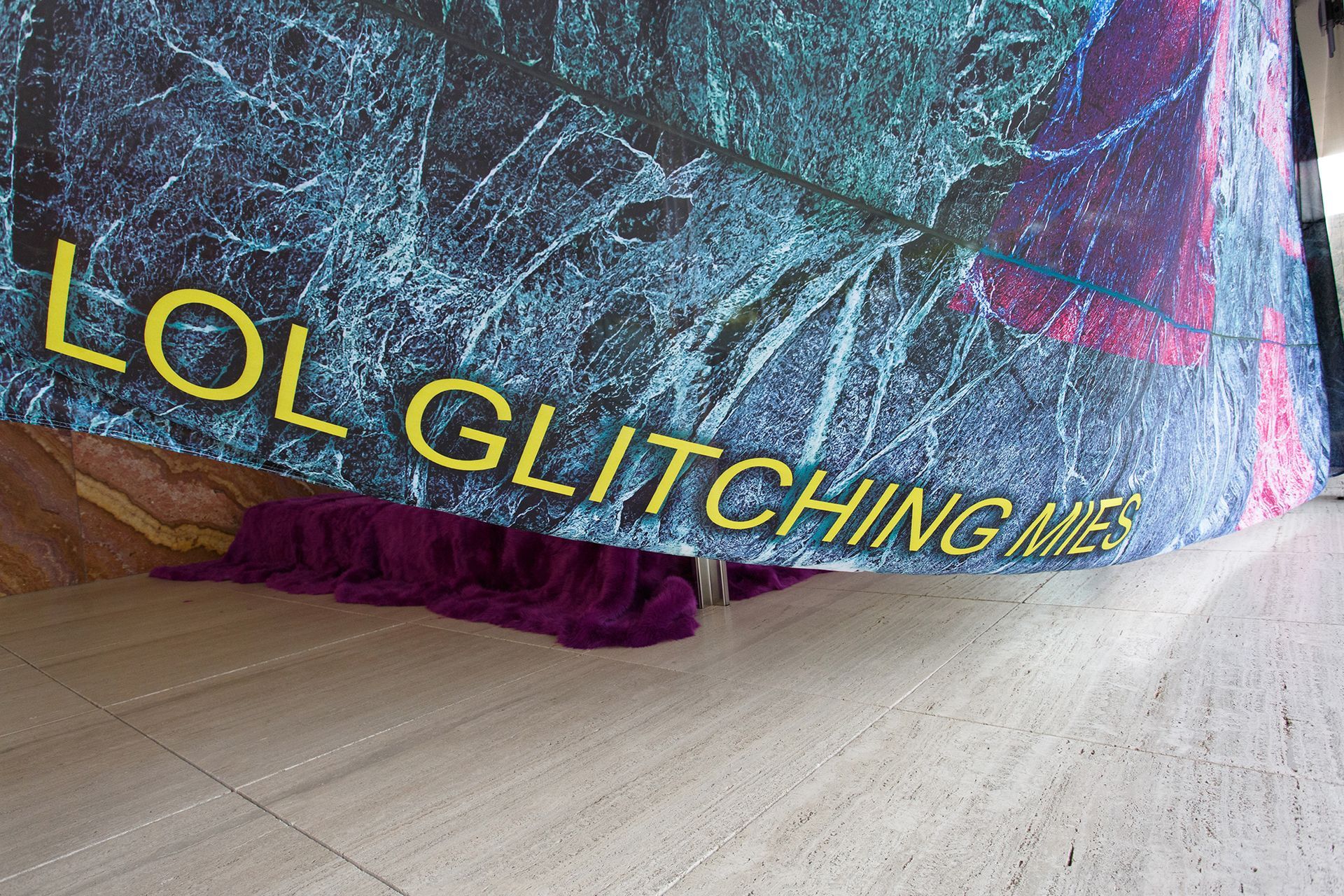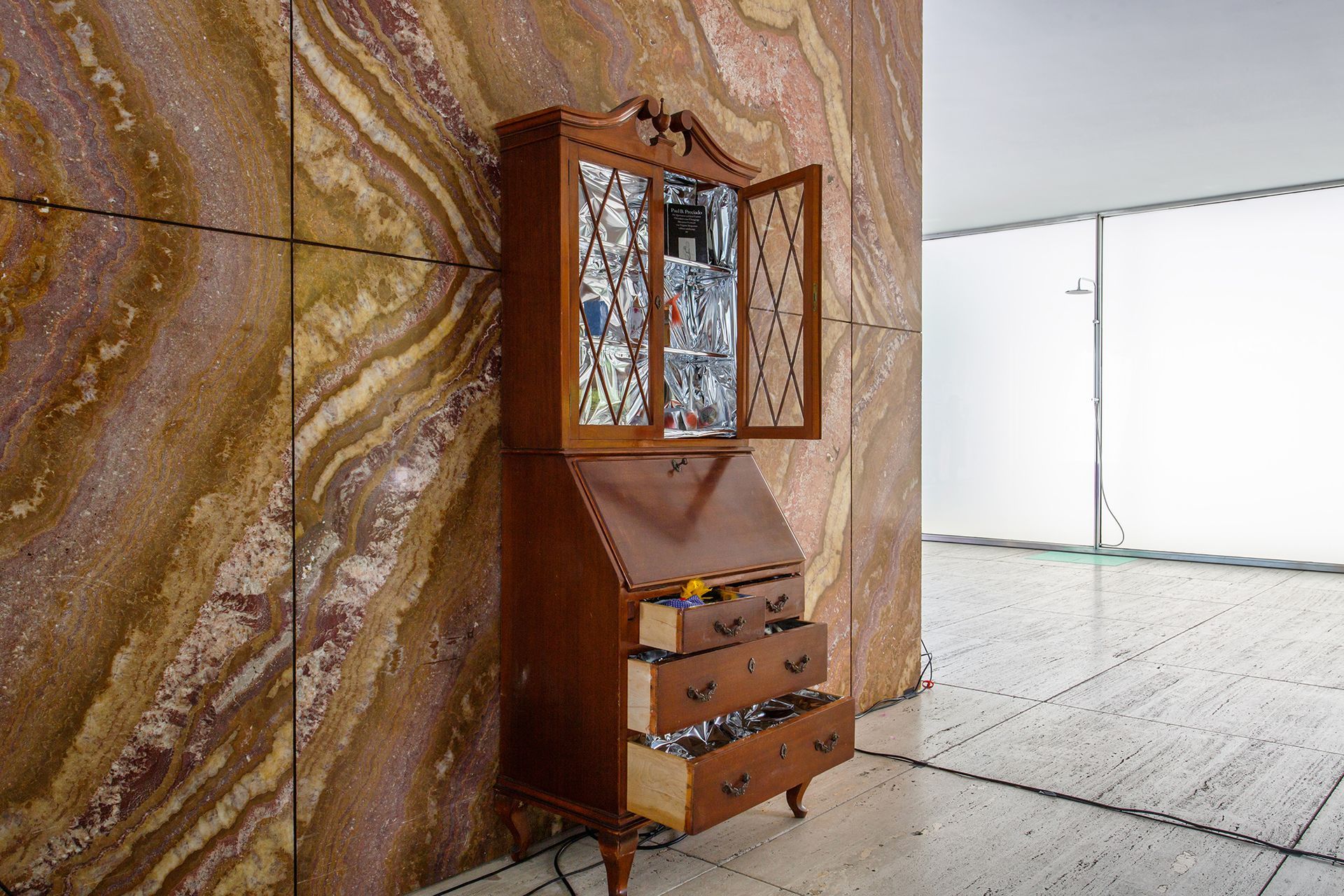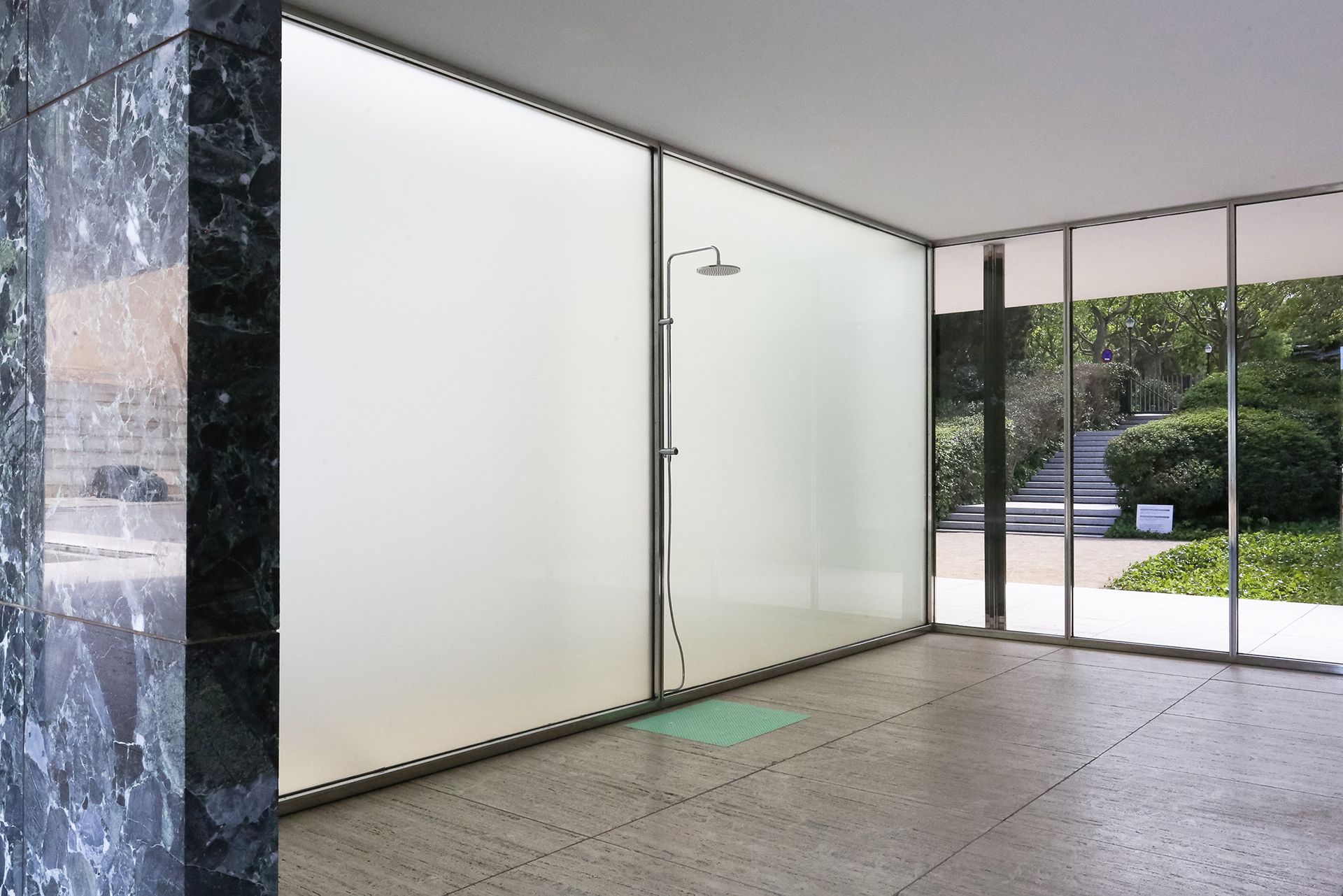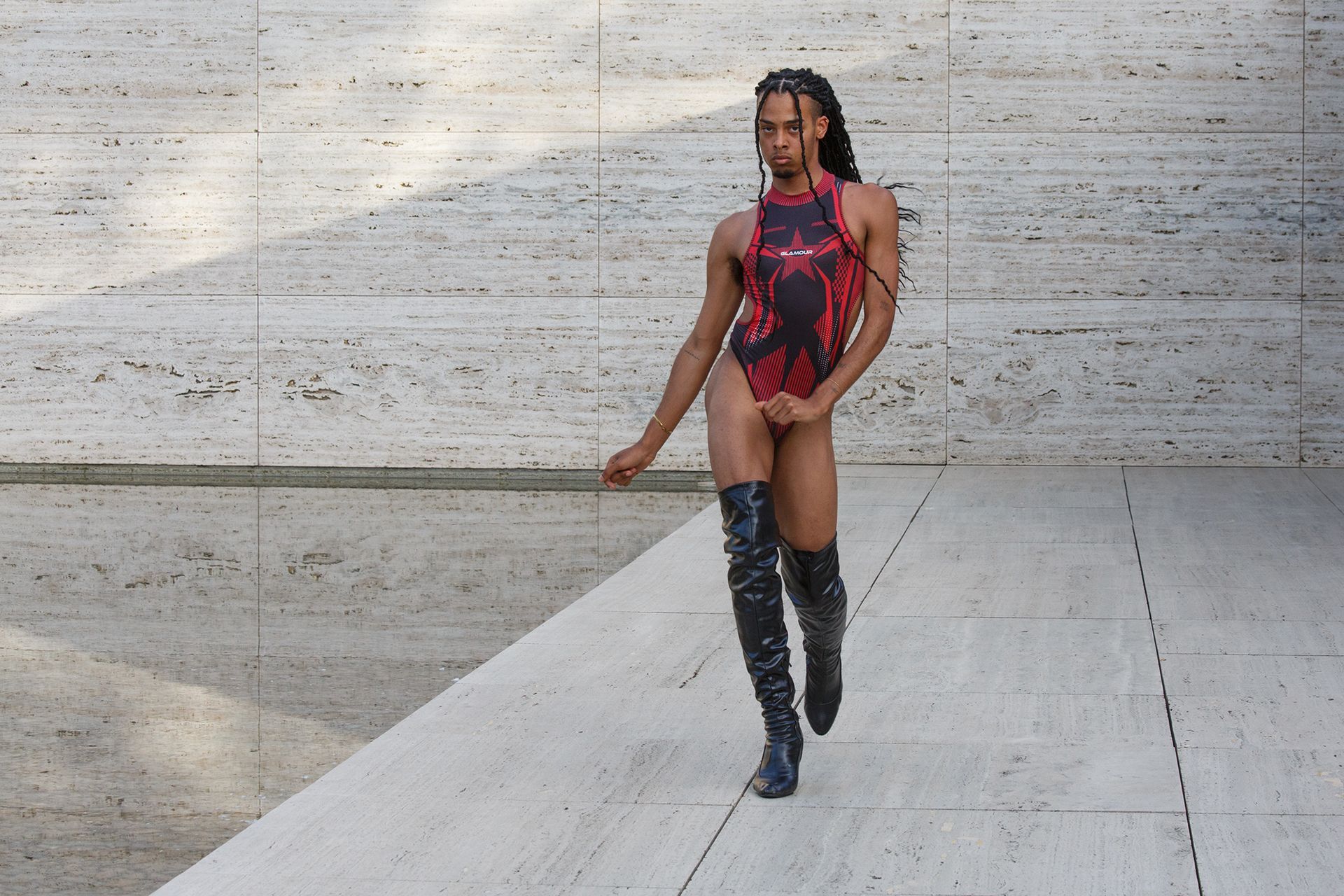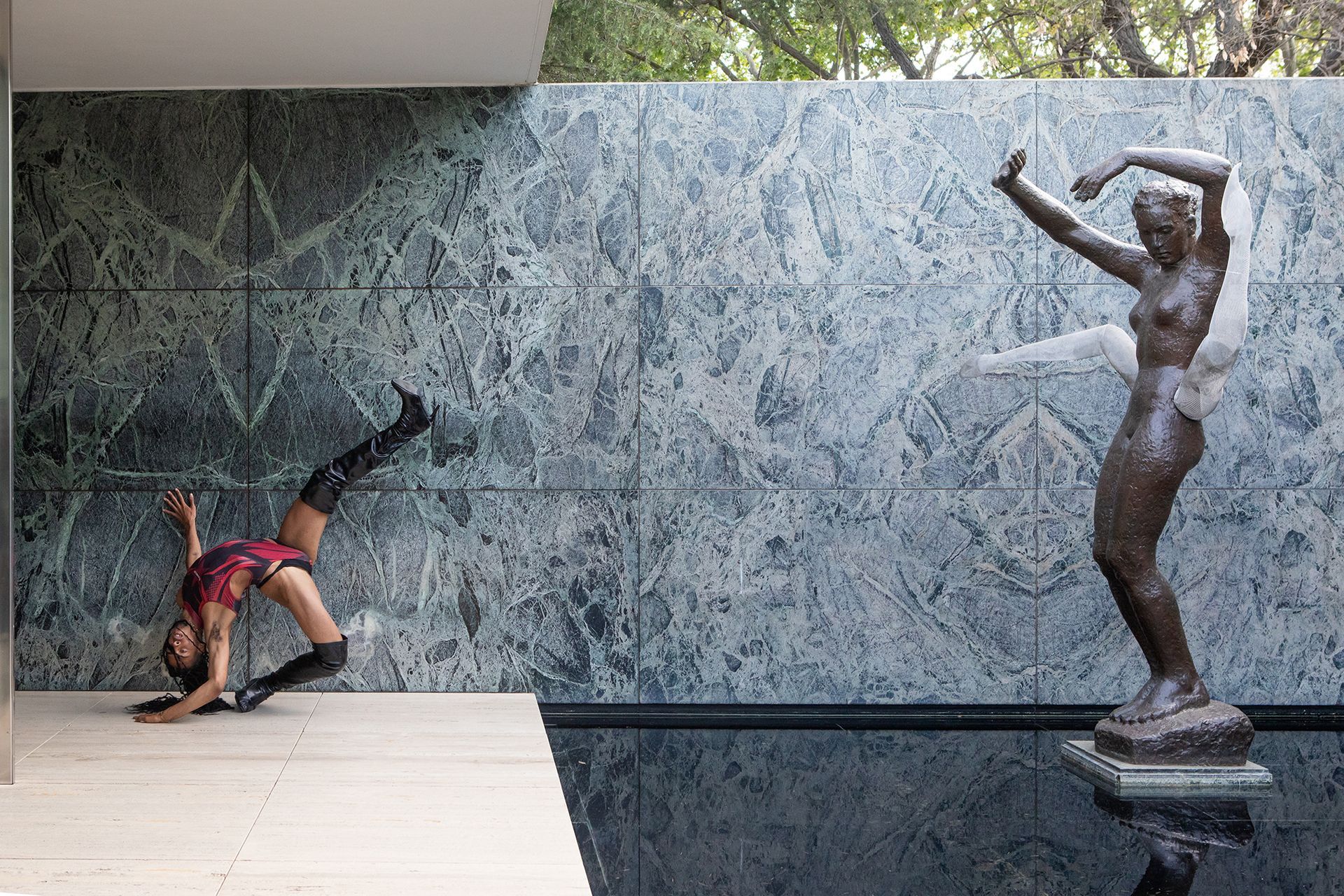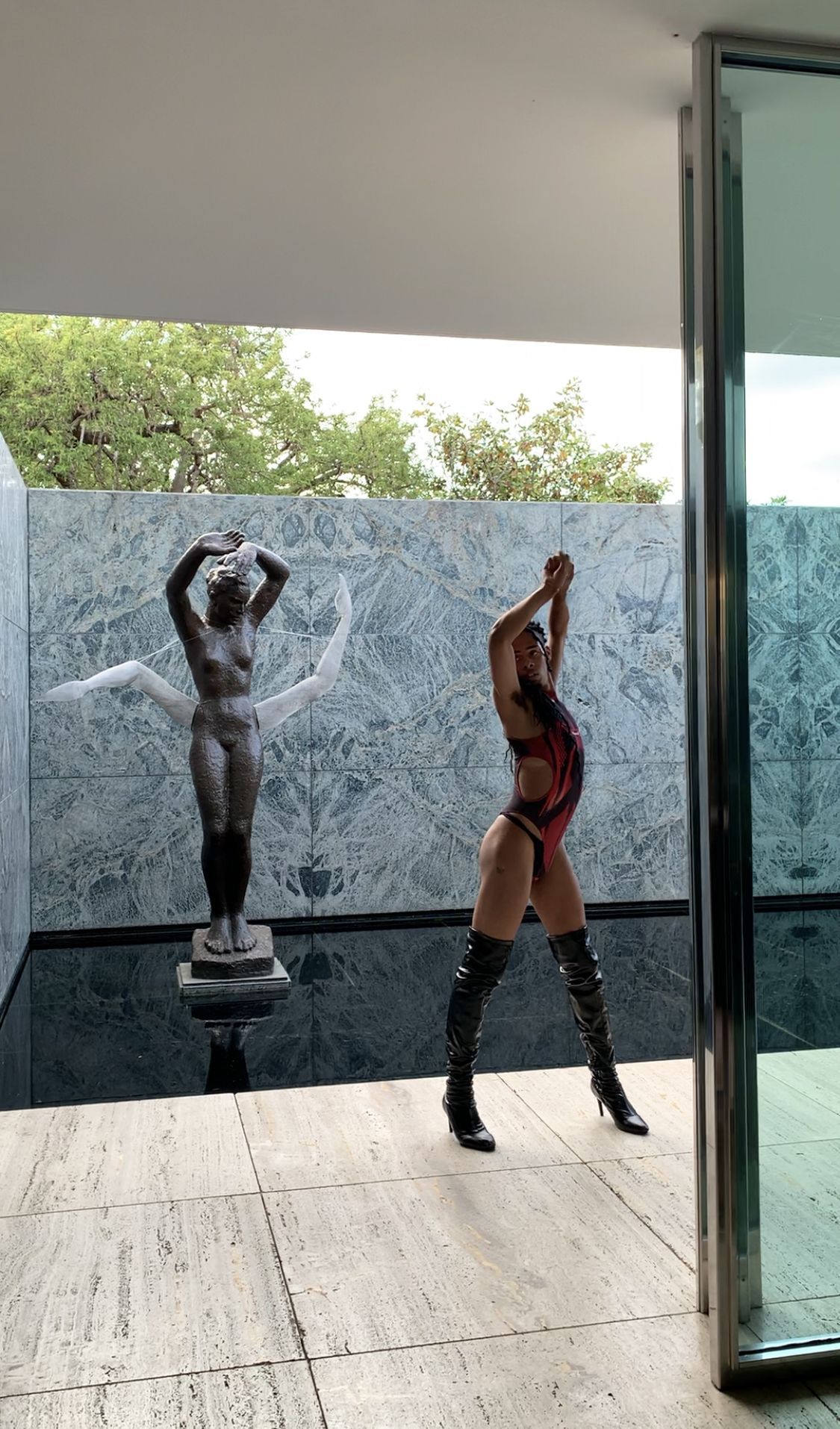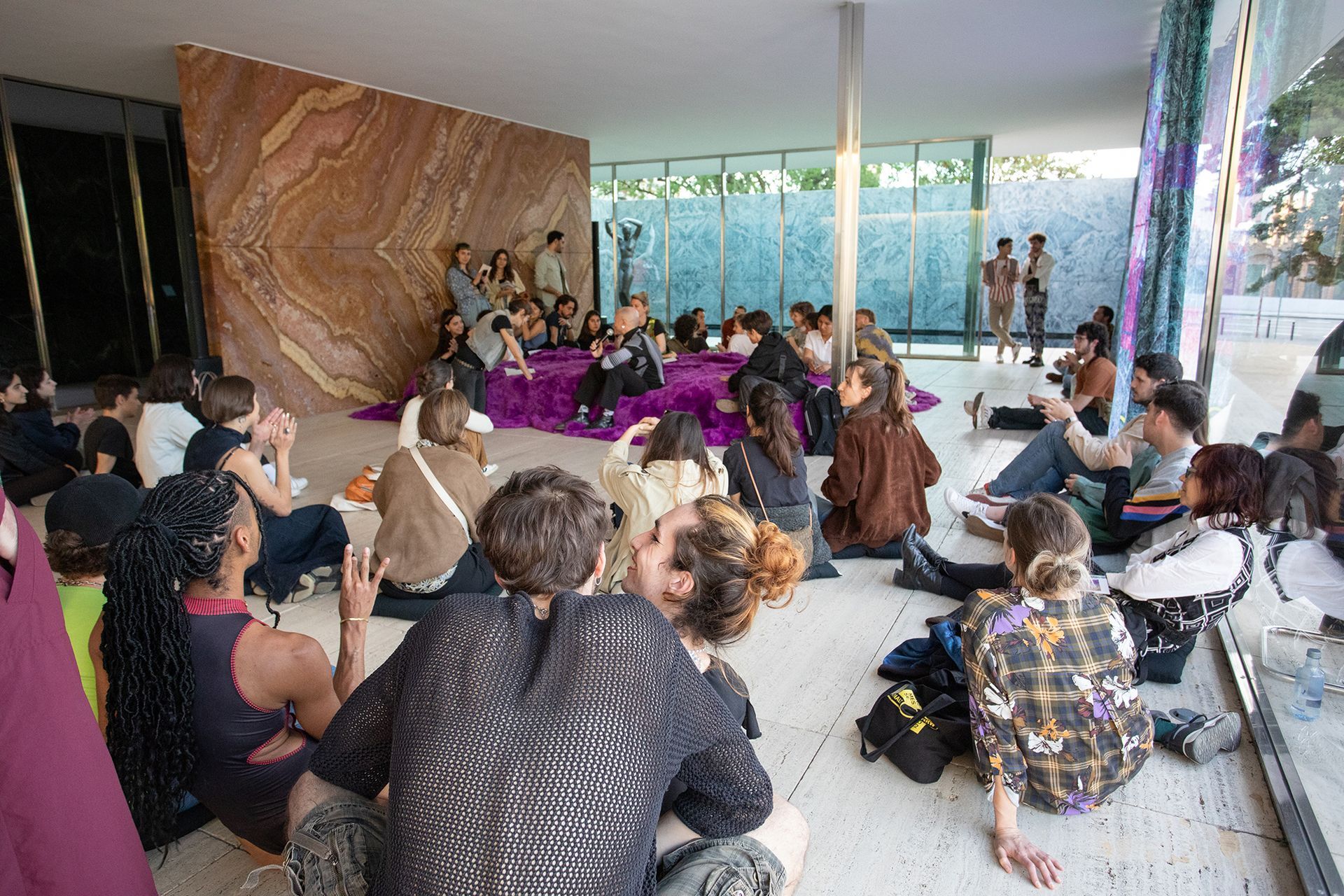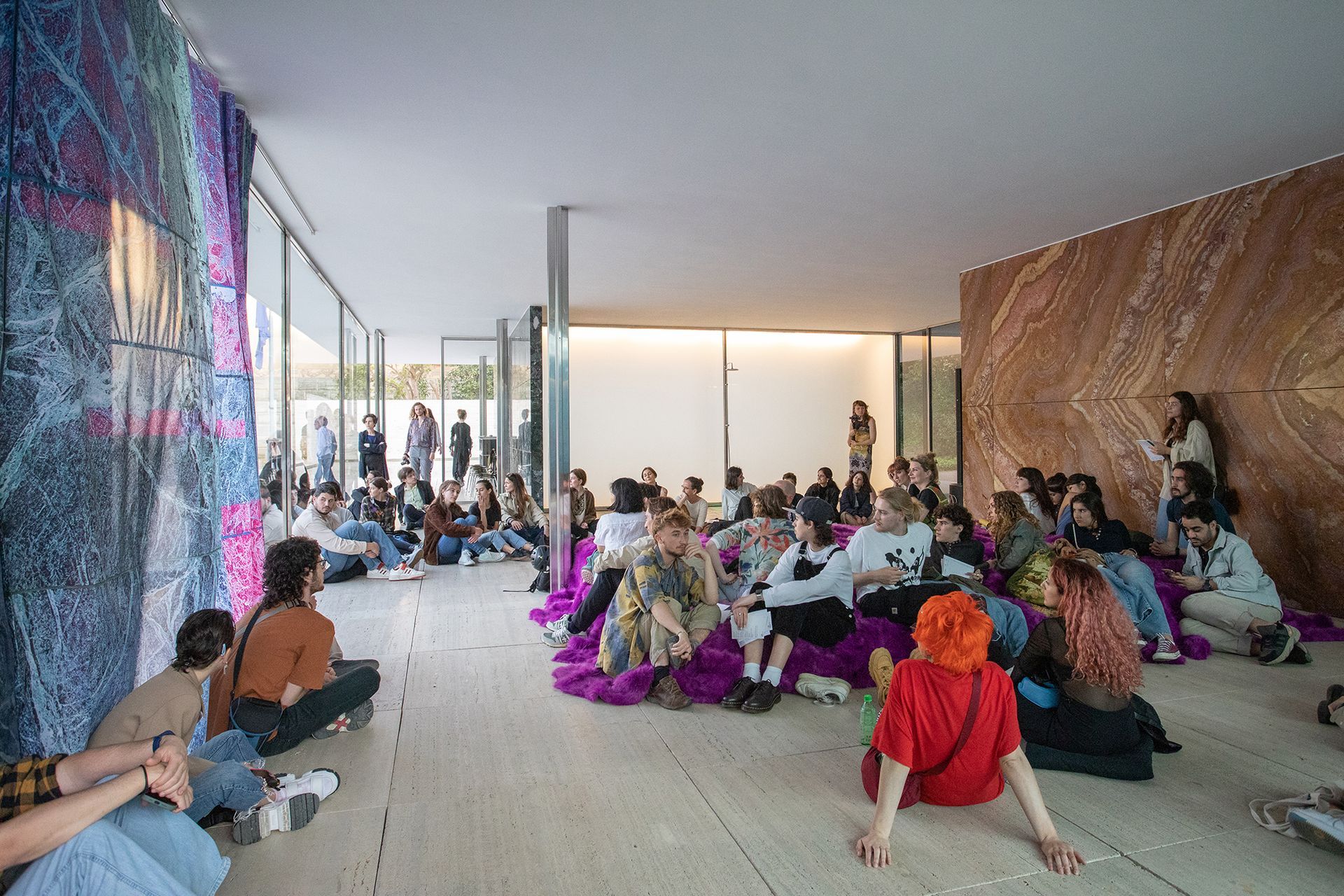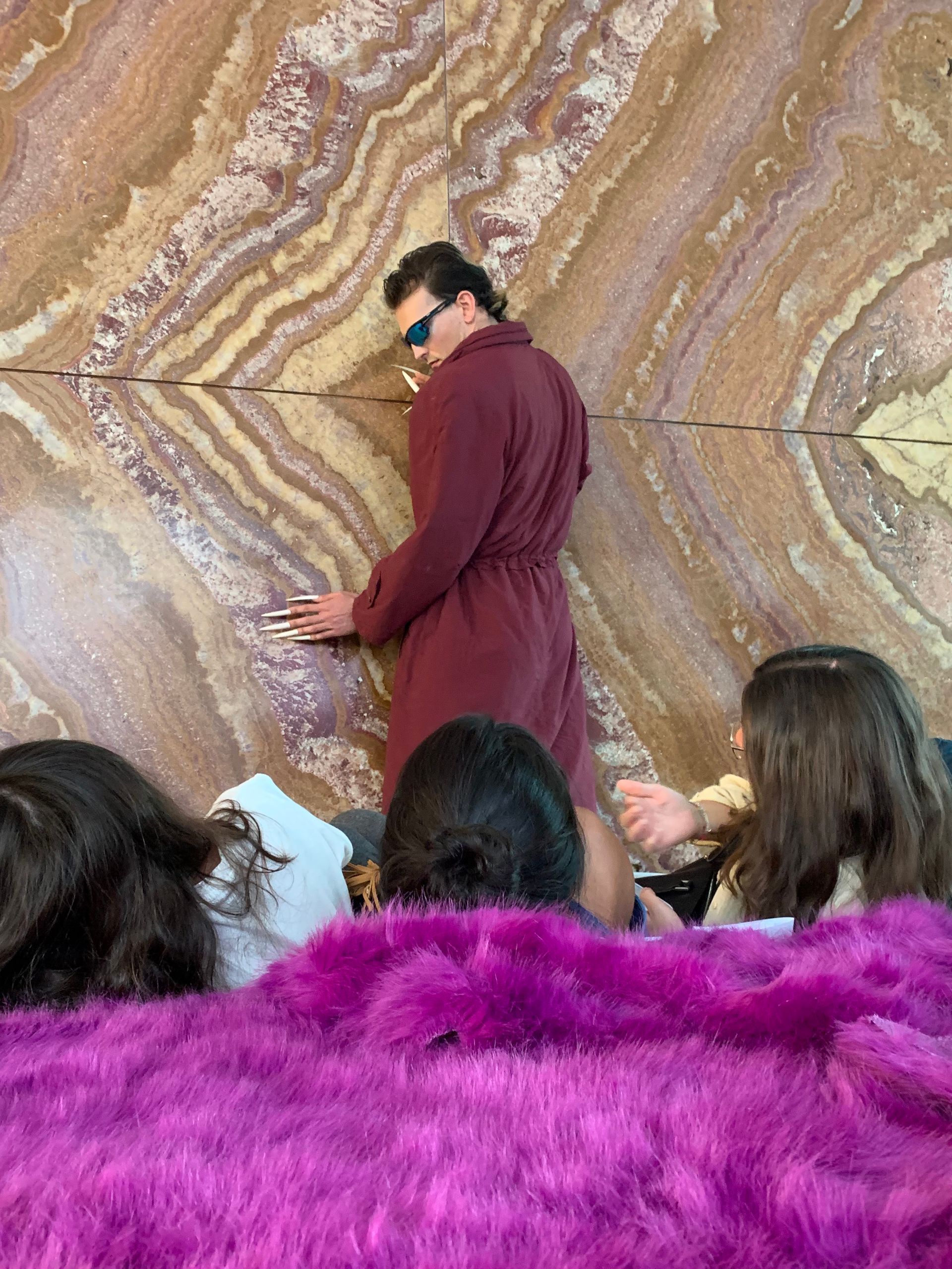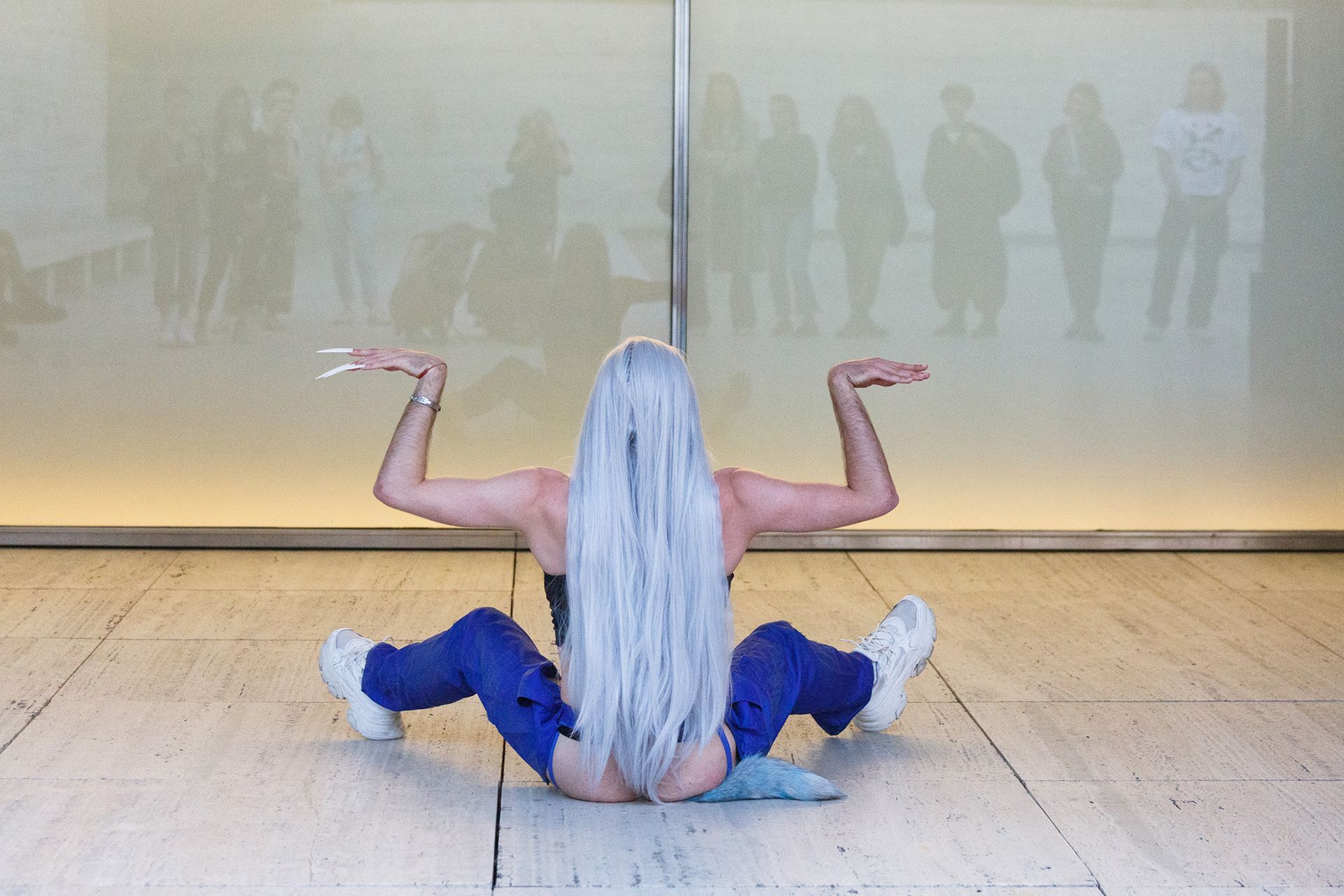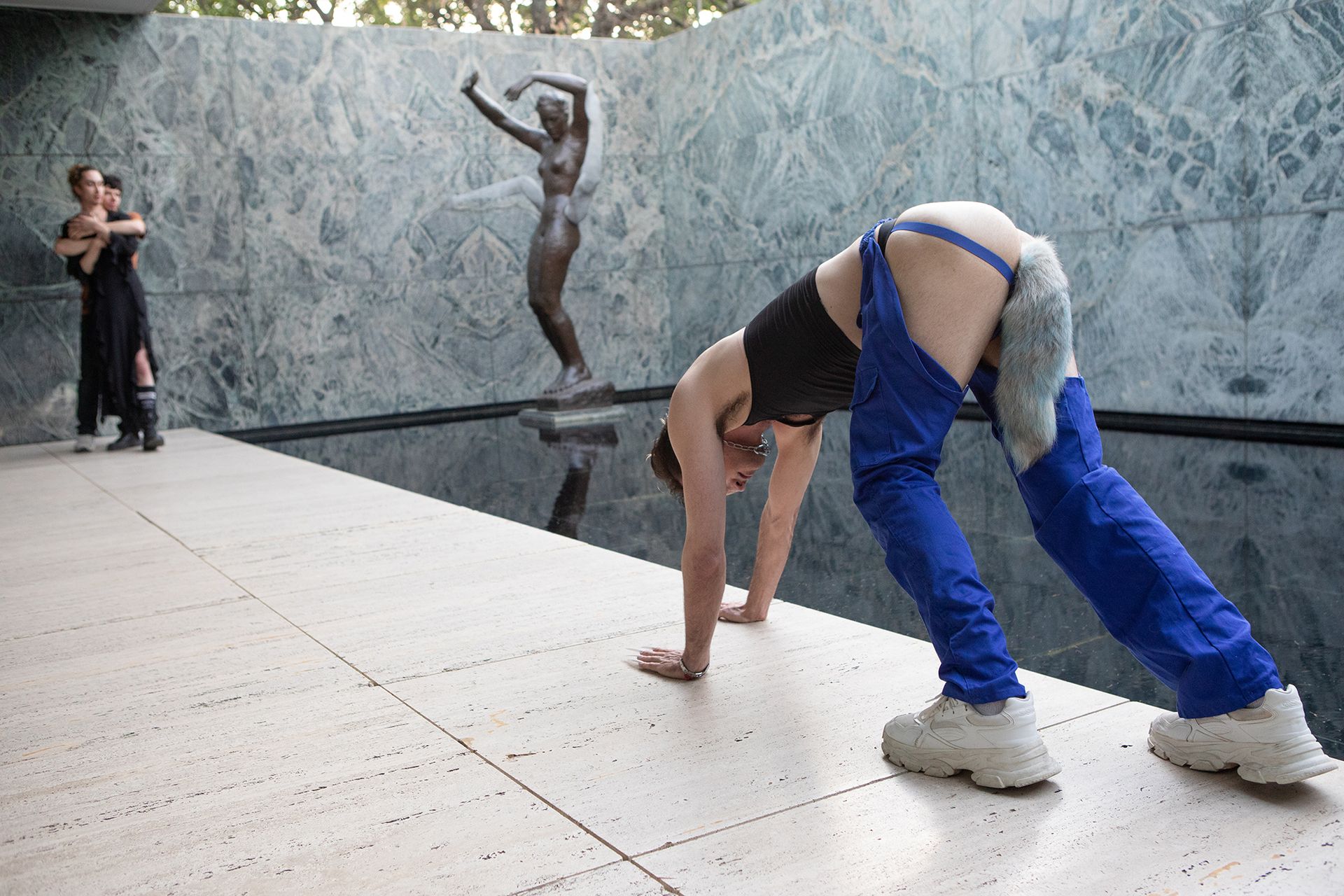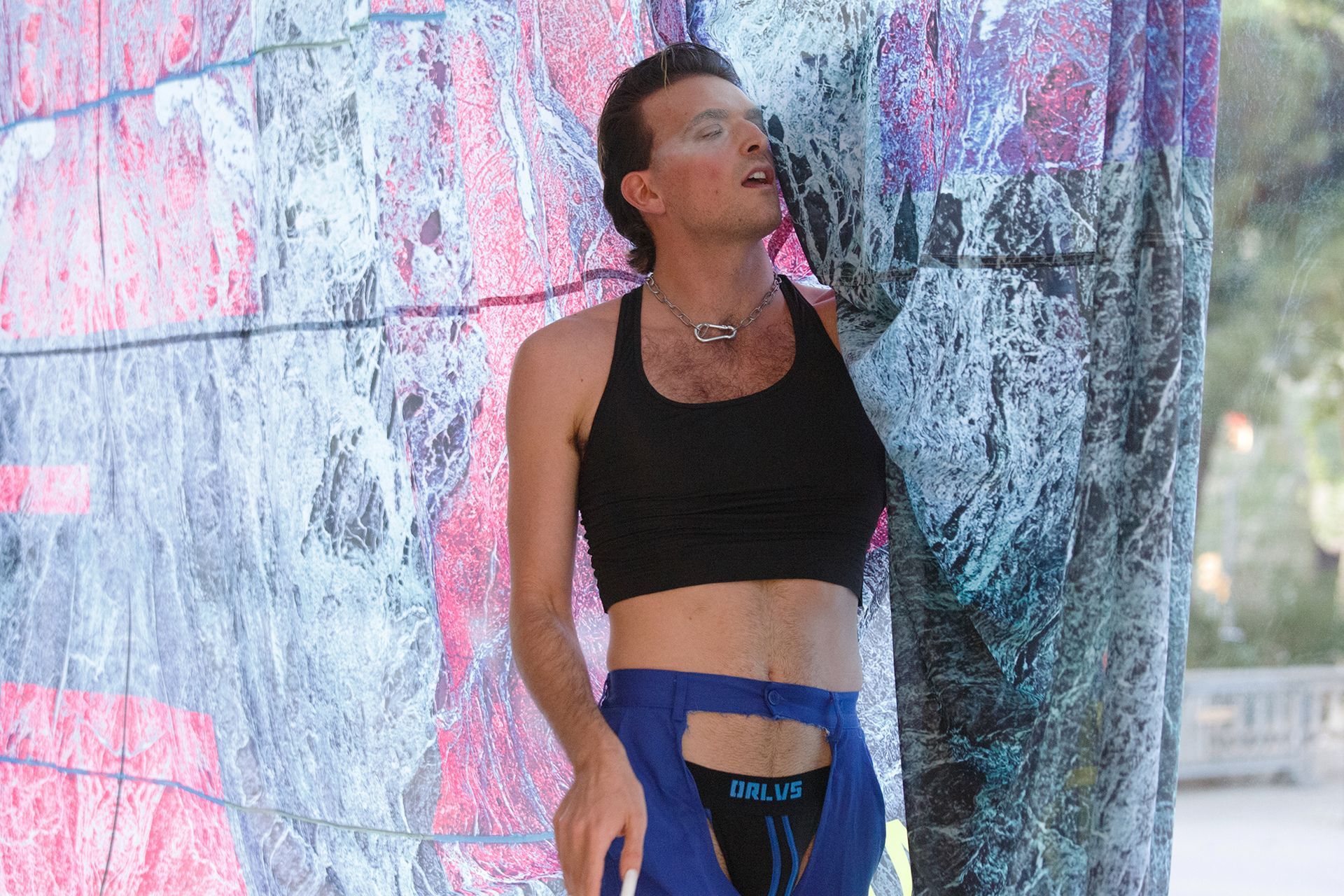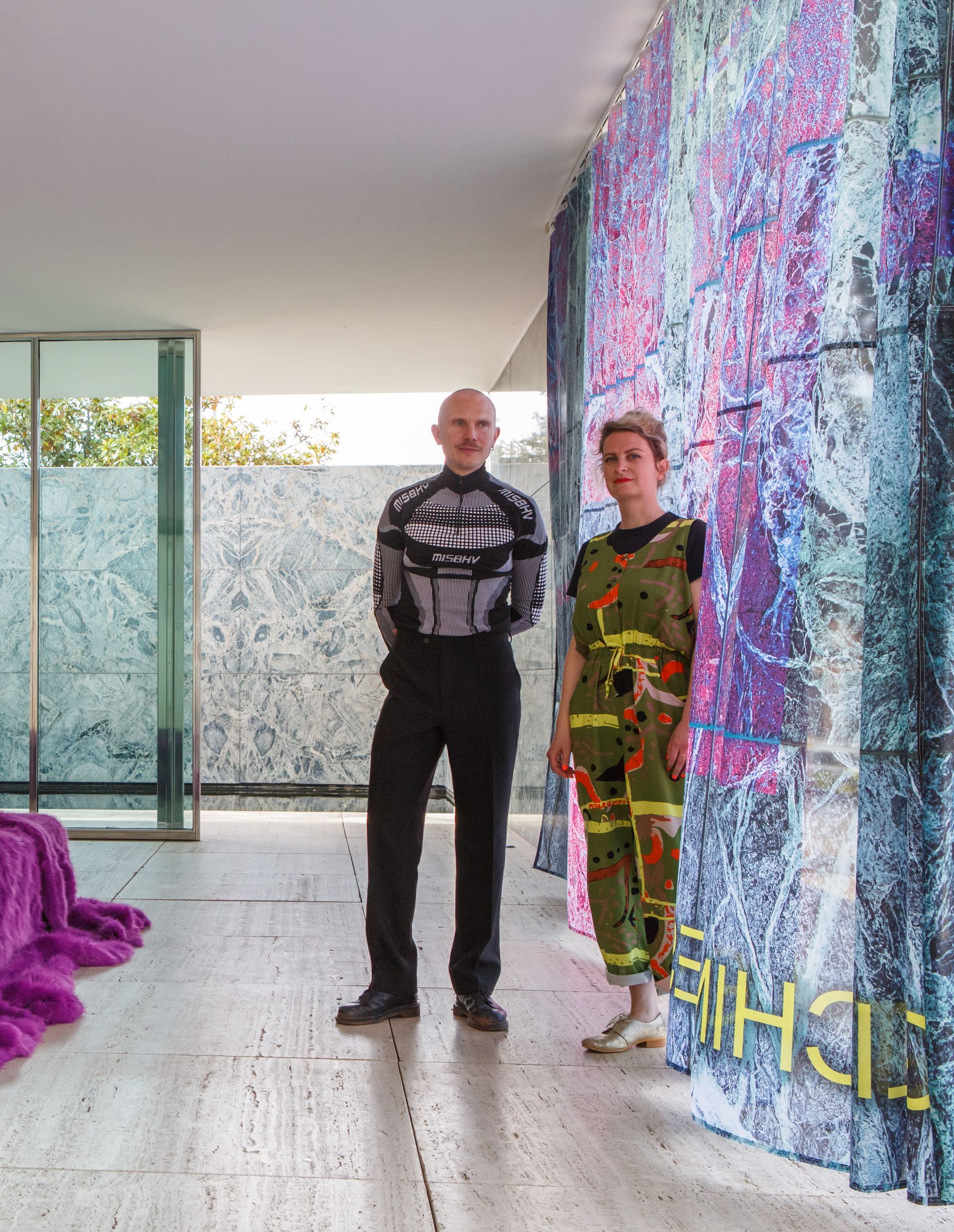GLITCHING MIES
2023 / Exhibition / Barcelona Pavilion / with
Bernadette Krejs
Organized and produced by Fundació Mies van der Rohe Barcelona
Funded by LINA - European Architecture Platform

Glitching Mies created a dissident moment and a participatory action that is challenging the Barcelona Pavilion as one of the main references in the modernist architectural canon. The Pavilion has been queered through questioning and transgressing its hegemonic principles of material, space and use.
The never aging image of the Barcelona Pavilion by Lilly Reich with the help of Mies van der Rohe and its reconstruction from 1986 displays its fluid spaces and fake realities of a fictional manifesto of Modernism, presenting itself as a seemingly neutral, universal and self-referential architecture icon.
As an undisputed reference, the pavilion represents the dominant narrative of the architectural canon: spaces emptied of any domesticity, framed by hard and prestigious materials and homogenous staged elements of objects, people and stories around it. But every building narrative has its accidents, cracks and glitches that can unleash “phantomed stories” [Jaque, 2020]. Glitching Mies embraces these blurring moments of counter visibility through occupying and irritating the well-known spatial and visual setting of the Pavilion, by transitioning its materiality, its boundaries and hierarchies.
Thereby queering is introduced as a spatial practice for the “enactment of architecture” [Bonnevier, 2007], which implies the possibility to move, to interpret and to open static conditions of the Pavilion by disturbing the order of things. [Ahmed, 2006] This transformation is a joyful act as Paul B. Preciado states, “the crossing is a place of uncertainty, of the unobvious, of strangeness. It is not a weakness, but a power.” [Preciado, 2020]
Glitching Mies created an in-between moment showing the transformative potential of otherness and multiplicity by un/learning and re/claiming the status quo. An ambiguous glitch where questions arise: What‘s good? Who is we? Whose histories are told? On 27th and 28th of April several interventions at the Barcelona Pavilion, that glitch the usual visual reproduction of the pavilion, interrupted peoples’ flows through space and provoked moments of questioning hegemonic references in today‘s architecture: Let‘s overcome the submissiveness!
Glitching Mies was therefore a feminist, participatory action, “a form of refusal” [Russell, 2020] of a dominant and exclusionary knowledge production and distribution. Everybody was invited to be an accomplice by bringing a small object to the Pavilion and place it in the closet of embodied knowledge and thereby become part of the exhibition.
A Radical (Cozy) Salon on the 27th of April was the initial point where guests were able to cruise through the installations, share stories on Lily’s bed and discuss their dissident experiences with hosts Bernadette Krejs and Max Utech.
The invited two Performers Jayce (Voguing/Ballroom culture) and Iver Zapata (Queer/feminist view on contemporary dance) supported the participatory action by interacting with the installations and used the glitch in the institutional setting to claim their space and powerfully present their dissident performative spatial practice.
References
Jaque, Andrés: Superpowers of Scale, New York 2020, S. 105.
Bonnevier, Katarina: Behind straight curtains, towards a queer feminist theory of architecture, Stockholm 2007, S. 22.
Ahmed, Sara: ORIENTATIONS: Toward A Queer Phenomenology’,in: GLQ: A Journal Of Lesbian And Gay Studies 12, no. 4, 2006, S. 565.
Preciado, Paul B.: An apartment on Uranus: chronicles of the crossing, South Pasadena 2020, S. 33.
Russell, Legacy: Glitch Feminism: A Manifesto, London 2020.
Photography (c) Anna Mas
